Carnegie Hall |
| Leica M6 + Leitz 8-element Summicron 35mm Kodak PX125 in Diafine |
Wednesday, April 16, 2025
Old Haunts: Carnegie Hall, Lincoln Center, The Juilliard School + the UWS
Tuesday, September 19, 2023
Shoten R50 Pentax K to Leica M adapter
Inasmuch as I love music and retrotech high fidelity music reproduction, I think it's healthy to take periodic breaks from hifi. Frequent visitors know that I also enjoy photography, especially using black and white film loaded in old school manual focus cameras.
So today's blog is about the Shoten R50 lens adapter that's designed to take a 50mm (Note: a 35mm, 45mm, 55mm or 58mm, etc. won't focus accurately) Pentax K bayonet mount lens and fully couple to the rangefinder focus cam of a Leica M body from 0.7 meters to infinity.
Sunday, January 15, 2023
Leitz 8-Element Summicron 35mm f2
While organizing my Flickr, I noticed that I've uploaded over 700 images taken by the Leitz lens I use the most - the first version of the 35mm f2 Summicron. I've blogged about this lens in the past when it was merely an old user lens, which took very pleasing images.
However, in the recent years, this 8-element lens has caught the attention of aficionados, skyrocketing its value. In fact a reverse engineered version of this lens is being remanufactured in China in limited quantities.
 |
| Ninoy Aquino International Airport, Manila 2011 Kodan Tri X in Diafine |
It's not a razor sharp optic and the corners vignette wide open.
 |
| Macau 2014 Fuji Acros in Diafine |
I like the way it creates an illusion of a three dimensional image with a smooth bokeh.
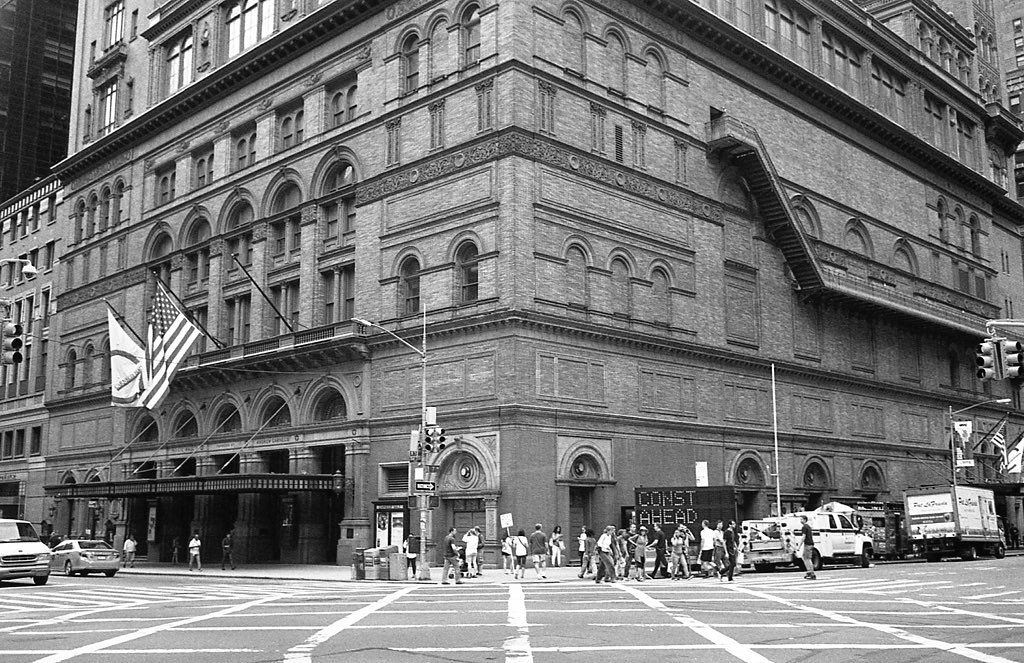 |
| Carnegie Hall 2016 Kodak Plus X in Diafine |
 |
| NYC 2016 Kodak Plus X in Diafine |
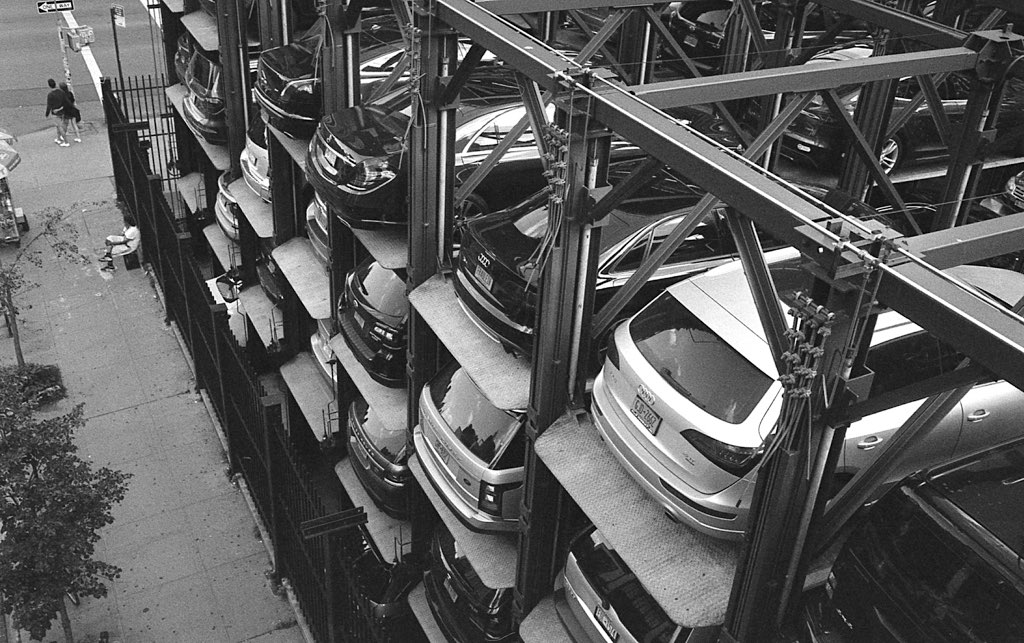 |
| High Line NYC 2016 Kodak Plus X in Diafine |
 |
| SoHo NYC 2016 Kodak Plus X in Diafine |
 |
| Segerstorm PAC 2016 Kodak Plus X in Diafine |
 |
| Toronto 2017 Kodak Plus X in HC110 |
 |
| Kensington Market, Toronto 2017 Fuji Acros in HC110 |
Subtle tonal gradations are well preserved by this medium contrast lens.
 |
| Princeton U 2021 Kodak Portra |
 |
| NoMad NYC 2018 Fuji Acros in HC110 |
The technical limitations of this lens contribute to its overall character and charm.
 |
| Water Jug 2014 Fuji Acros in Rodinal |
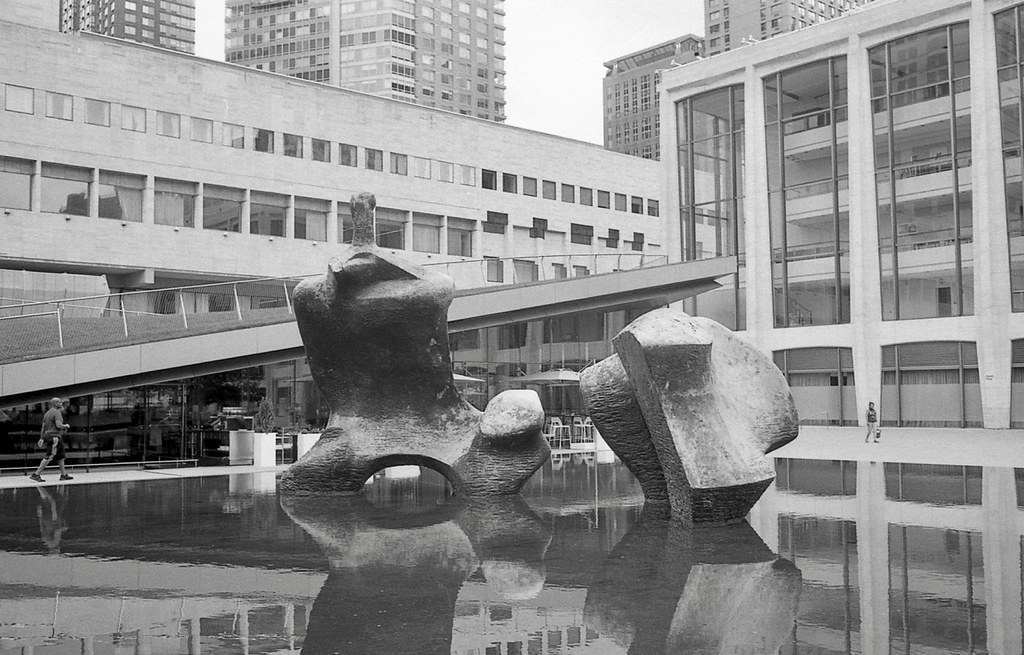 |
| Lincoln Center 2019 The Juilliard School (left) + David Geffen Hall (right) Ilford FP4+ in Rodinal |
 |
| JE Labs LP Collection 2022 Sony A7II |
I like how this lens tames a digital sensor, just like I utilize vacuum tubes + transformers to turn a number crunching DAC chip into a musical device.
 |
| JE Labs HiFi 2022 Sony A7II |
I love seeing the tonal quality of my hifi through this lens.😉
Saturday, March 19, 2022
Analog LP Playback + Film Photography
Combining my passion for two obsolete technologies |
| Thorens TD124 MKII with heavy platter + Alfred Bokrand AS309 tonearm Canon P + Canon 50mm f1.8 LTM Ultrafine eXtreme 100 in Kodak HC110 |
Late last year, I acquired the classic AS309 tonearm for my Thorens TD124 MKII from Alfred Bokrand. I really can't hear a difference between the AB309 and AS309, even if I'm forced to split hairs. I'm just happy to own both!
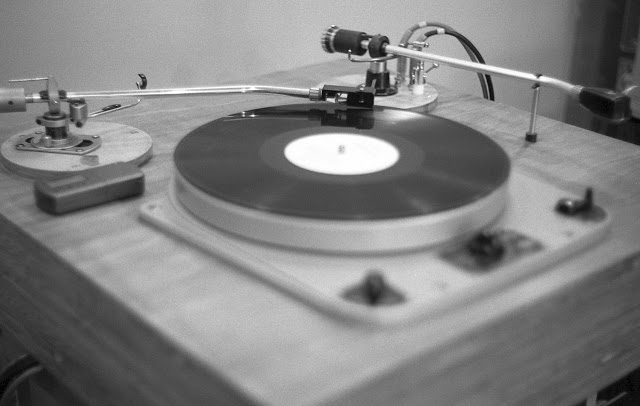 |
| Garrard 301 + Ortofon RMG309 + SME 3012 in JE Labs plinth Tower 3 (Leica copy) + Leitz Summitar 5cm f2 Ilford FP4+ in Kodak HC110 |
A couple of blog readers and Instagram contacts have reached out regarding long delivery times from Alfred Bokrand. All of my transactions with him were done through eBay and on the average, delivery was within two months. I highly recommend that buyers order via eBay since it has a buyer protection guarantee.
Monday, November 22, 2021
TT Artisan Light Meter
Eleven days after I uploaded my shoe mount light meter article, I took delivery of this light meter from TT Artisan. It came in a nice Japanese-style package!
Thursday, October 21, 2021
My Collection of Classic Shoe Mount Light Meters
This collection of light sensing gizmos is merely a reflection of the gear head in me since I'm quite proficient with Sunny 16. My dad taught me how to take photos using his unmetered Yashica Penta J. When I see unloved vintage/classic camera paraphernalia for a couple of bucks, I am eager to provide a good home for them. If you want to see my handheld light meters, click here.
Except for the Voigtlãnder VCII, all these light meters employ the match-needle system on an analog dial, which remind me of a slide rule, albeit, circular. For more information, the user manual (when available) is hyperlinked in the text under the picture of each light meter.
 |
Leica Meter 2 |
This selenium light meter doesn't need batteries. The light it is measuring powers the meter. However, selenium isn't as sensitive under low light conditions compared to a battery powered CdS (Cadmium Sulphide) or modern Silicone photodiode. It is smaller but thicker than the Voigtländer VCII and looks great on an early Leica Barnack body.
I paid a couple of bucks for this at an antique store a few decades ago. The selenium cell didn't react to light and the incident light attachment was missing. I sent it to Quality Light Metric and George Milton replaced the dead cell. I consider this more of a collectible than a user, thus, it spends most of its time inside its brown leather case, which prolongs the selenium cell's life.
 |
Gossen Pilot 2 aka Sixtino |
Significantly bigger than the Leica Meter 2 and a tad more sensitive in lower light, this Gossen selenium also measures both incident and reflected light. In my nearly 30 years of scouring Photorama camera shows, thrift stores and flea markets, I've yet to encounter one with a dead cell. This is one of the three I own and this particular unit was recently acquired at a flea market for $7. A bit bulky and just slightly smaller in girth than the Sekonic L-208, it's a nice meter for daylight photo walks. Highly recommended if you want a battery independent light meter!
 |
Kalimar Clip-On |
Not much information can be found about this relatively compact light meter except that which I've already linked. Kalimar was a US distributor of photographic equipment, which sourced cameras and photo accessories from all over the world and had their name stamped on the product.
This CdS light meter requires a PX625 Mercury cell, which is toxic and no longer available. The use of a modern PX625A yielded inconsistent readings. So I hacked a dead PX625 and inserted a 675 sized Wein-cell hearing aid battery into the PX625 shell. Voila! The needle moved when I pressed the button and got readings that were consistent compared to my known light meters. It's also more sensitive in lower light than the selenium meters.
 |
Sekonic Twinmate L-208 |
Sekonic is a Japanese company but the Twinmate L-208 is proudly made in the Philippines. Its Silicon photodiode is powered by a single CR2032 lithium battery and has a light sensitivity range of EV3 - EV17. It is a significant improvement over the above selenium and CdS light meters. Just like all the previous ones, this can measure both reflected and incident light.
Given its size, I think it looks better on a TLR camera. I really like the center match-needle/analog dial ergonomics compared to the $40 digital light meters from China fitted with tiny buttons to navigate around a squinty LCD screen. Is it necessary for every device to resemble a smart phone nowadays?
This CdS meter was designed to be powered by a Mercury 675 battery. Surprisingly, it works great with a modern LR/SR44 without modification. The specified EV range of -1 to 24 maybe a bit optimistic but it's pretty close to the VCII meter in terms of low light sensitivity and accuracy. It has no incident light capability, just reflected light.
 |
Voigtländer VCII |
I paid under $200 for this light meter in the mid 2000s and it's still available for $225 from Stephen Gandy at cameraquest.com. Not cheap but in the big scheme of things, it has paid for itself. Its accuracy and sensitivity are probably surpassed only (albeit, slightly) by the built-in meter on my Leica M6. The Si photodiode is powered by two very common LR44/A76/357 batteries and it only measures reflected light. It's not a match-needle type of meter. Instead, it sports a dial for shutter speed and another dial for f-stop/ISO setting + LED indicators. This is an analog design with only a hint of digital (LEDs) and IMHO, MoMA worthy!
Hot on its heels is a new kid on the block, the similarly sized, styled and spec'ed Doomo Meter D at $125. It's ironic that this retro-clone of the VCII is also the most expensive shoe mountable light meter manufactured in China.
Perhaps analog dials and retro tech logic do command and deserve a premium? Hmm...🤔 Right before I clicked the publish button, I noticed something new in the TT Artisan's website. Let's see how that goes...😉
Thursday, September 9, 2021
DKL and Exakta mount lenses + Exa camera
Soulless creatures will assert that I love listening and looking at distortion when I say that triode amps make music sound more gratifying while classic lenses make pictures look more pleasant to the eyes.
They can carry on with their SINAD and MTF charts while I enjoy the 21st century with retro tech gadgets, which were designed by human ears and eyes aided only by primitive computers and instruments.
Leica M and LTM lenses have significantly appreciated in value, with M42 lenses following at their heels. However, the German lenses below can still be found at reasonable prices in DKL and Exakta mounts. These are just as easily adapted to current mirrorless interchangeable lens camera bodies.
DKL Mount Lenses
 |
| Zenit 11 + DKL>M42 lens adapter Schneider Kreuznach 45mm f2.8 (click for sample pics) |
I pulled this Schneider Kreuznach Xenar 45mm f2.8 out of a Kodak Instamatic Reflex camera. It doesn't have the sharpness nor resolution of its bigger brother below but it renders nice colors with low to medium contrast. The short throw focus and compact design makes it a nice street shooter.
 |
| Fujica ST801 + DKL>M42 lens adapter + Schneider Kreuznach Xenar 45mm f2.8 Ultrafine Extreme 100 in Rodinal 1+50 |
 |
| Sony A7II + Schneider Kreuznach Retina-Xenon 50mm f1.9 (click for sample pics) |
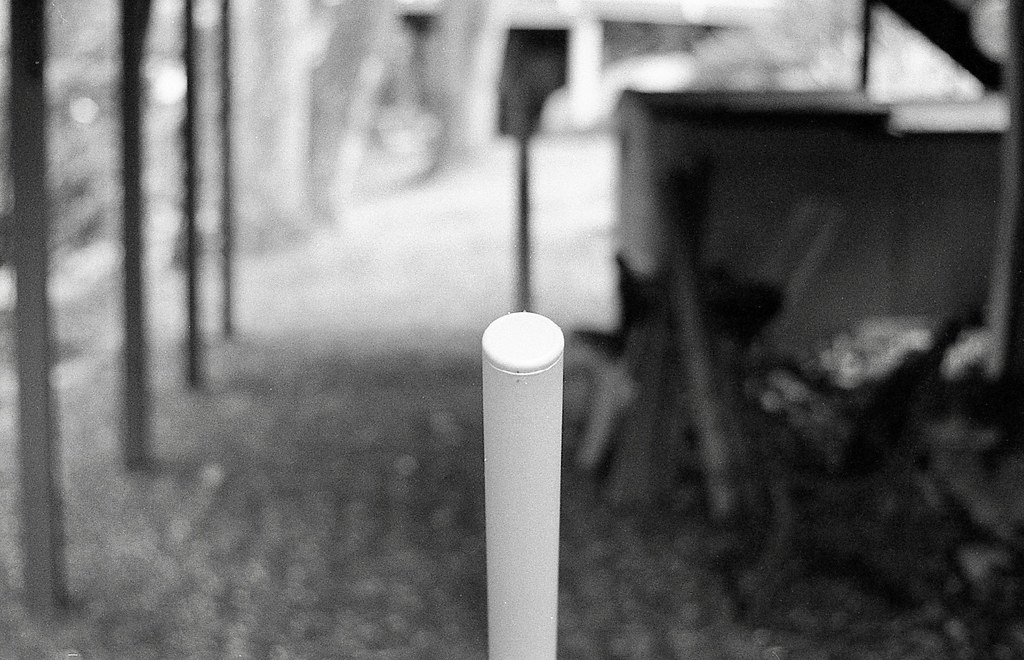 |
| Fujica ST801 + DKL>M42 lens adapter + Schneider Kreuznach Retina-Xenon 50mm f1.9 Ultrafine Extreme 100 in Rodinal 1+50 |
 |
| Zenit 11 + DKL>M42 lens adapter + Voigtländer Color-Skopar 50mm f2.8 (click for sample pics) |
 |
| Fujica ST801 + DKL>M42 lens adapter + Voigtlander Color Skopar 50mm f2.8 Ultrafine Extreme 100 in Rodinal 1+50 |
DKL Adapters
 |
| Voigtlander Color Skopar 50mm f2.8 DKL Lens + DKL>M42 lens adapter + M42>NEX lens adapter |
 |
| Schneider Kreuznach Retina-Xenon 50mm f1.9 lens + M42>NEX lens adapter |
NOTE: DKL lenses with built-in aperture rings aren't compatible with either of these lens adapters. Scroll down this link for more info.
Exa Camera + Exakta Mount Lenses
 |
| Ihagee Exa + Isco-Göttingen Westar 50mm f2.8 (click for sample pics) |
 |
| Isco-Gottingen Westar 50mm f2.8 + Exakta>NEX lens adapter |
 |
| Ihagee Exa II + Meyer Görlitz Domiplan 50mm f2.8 (click for sample pics) |




















